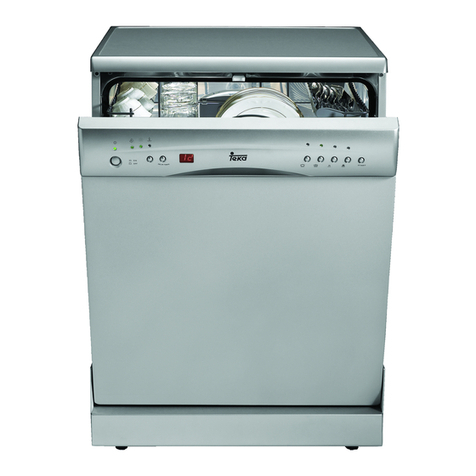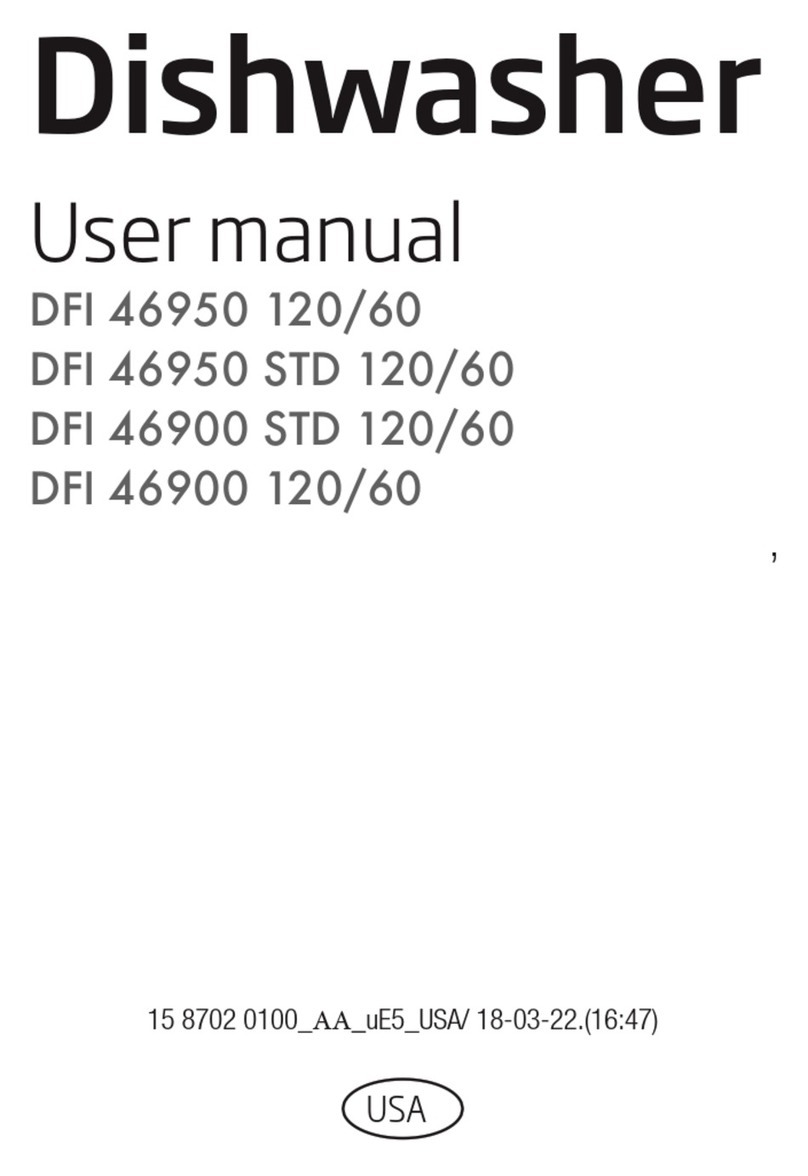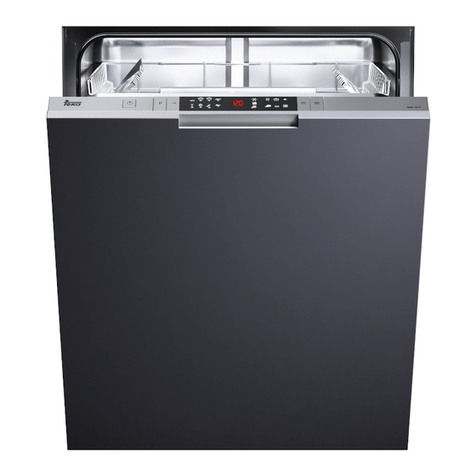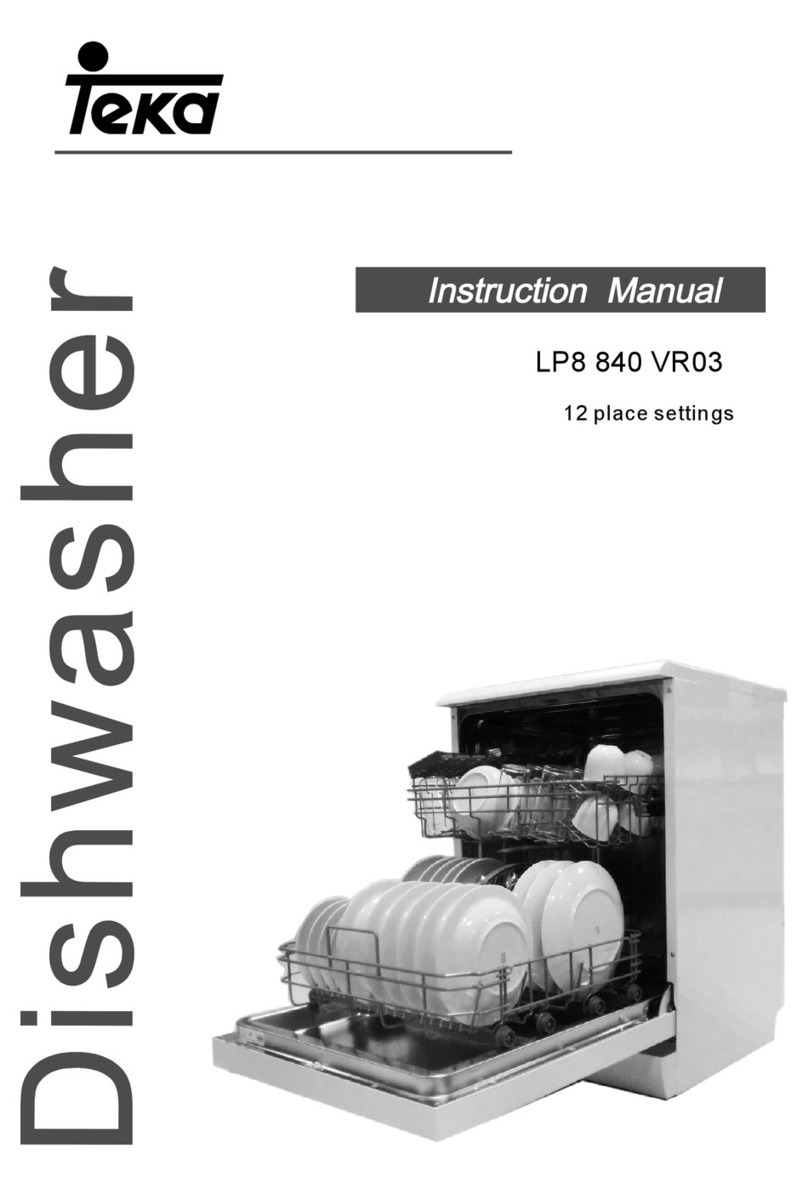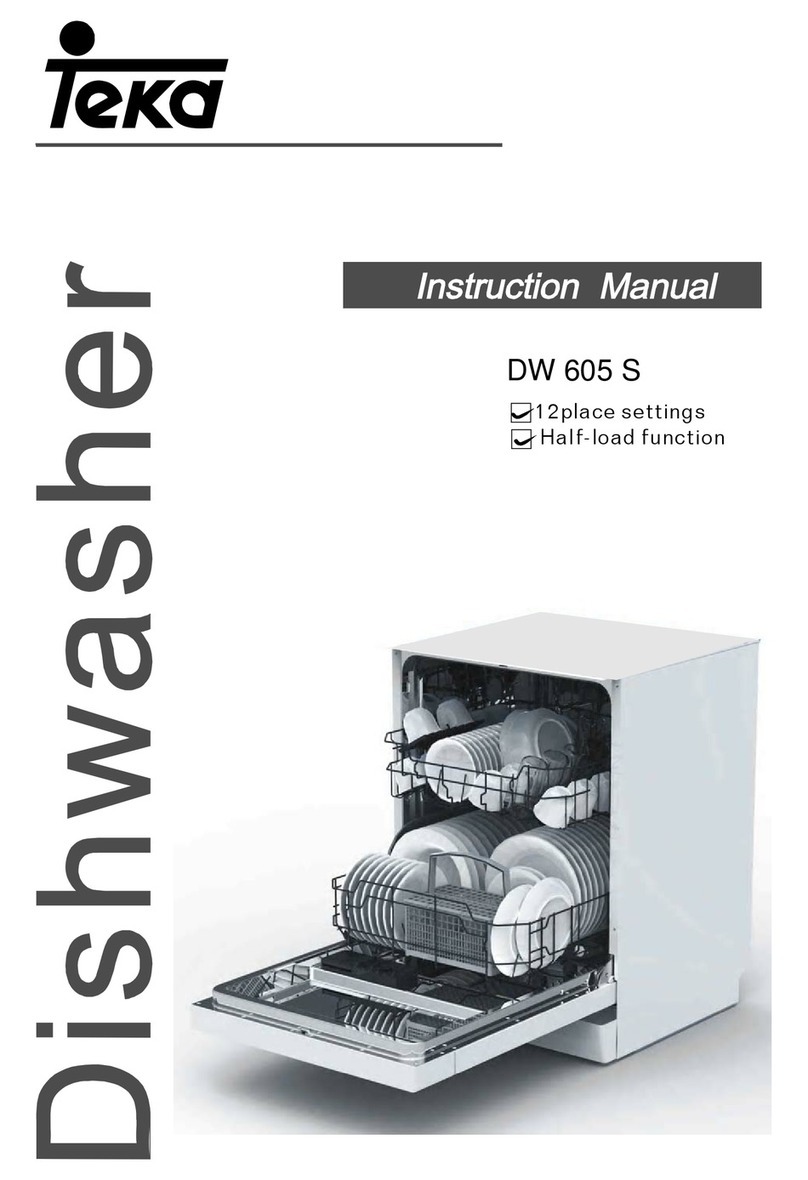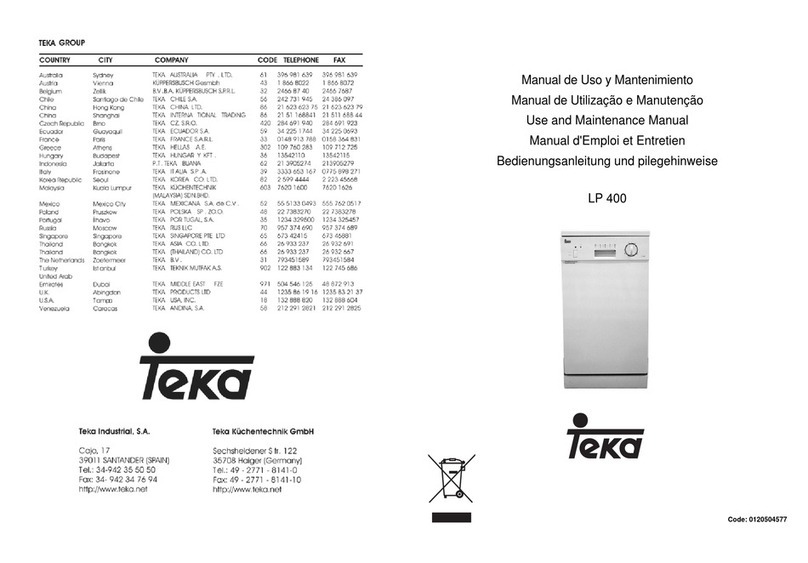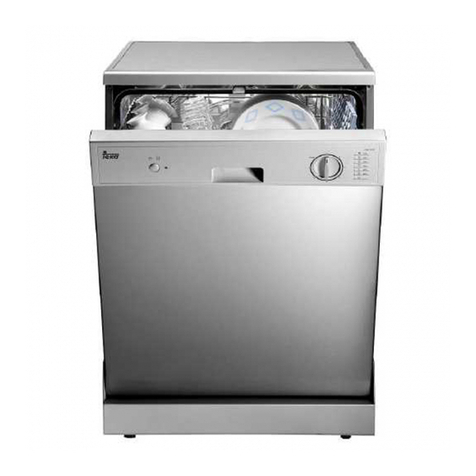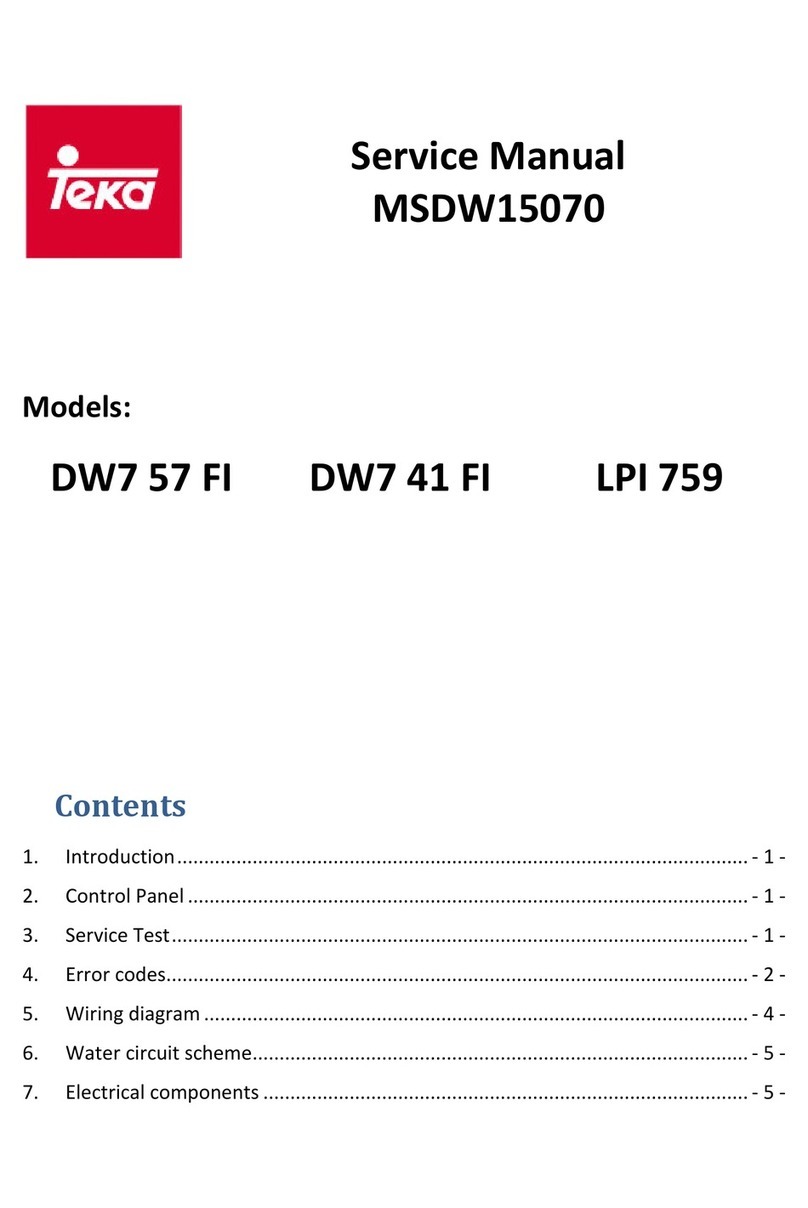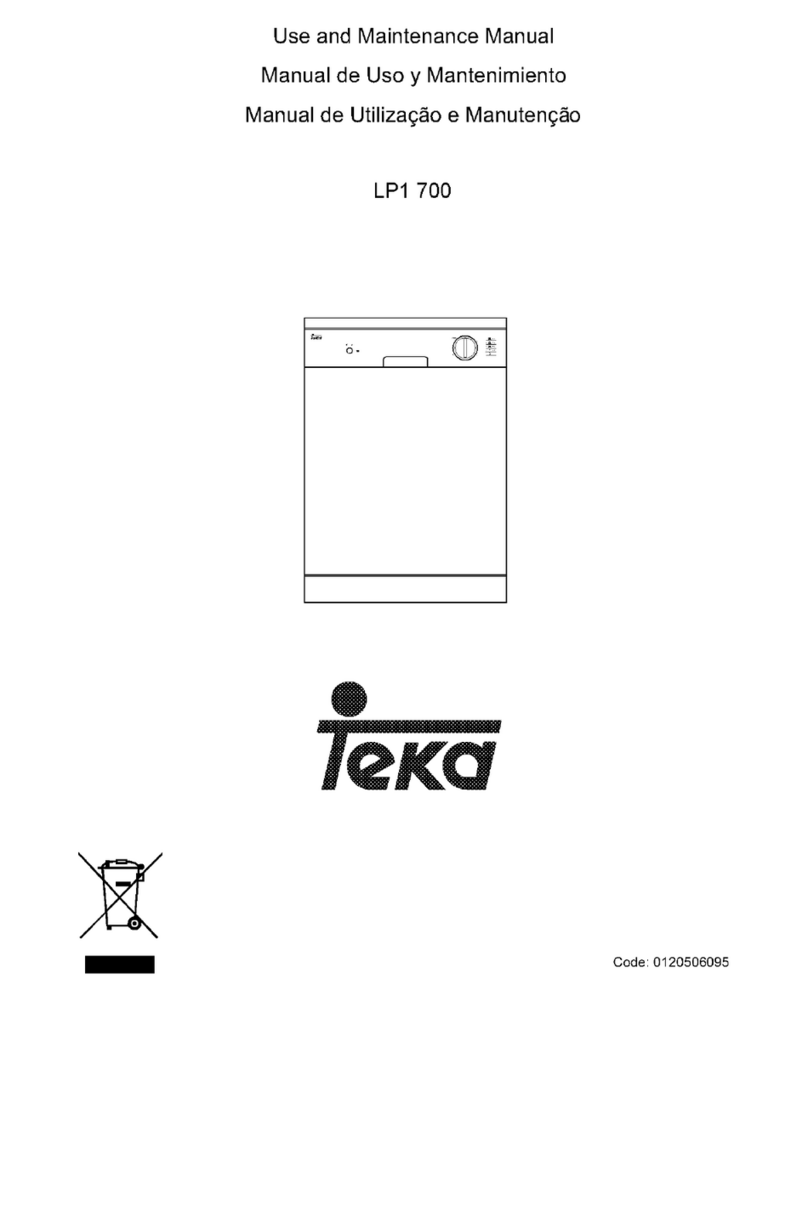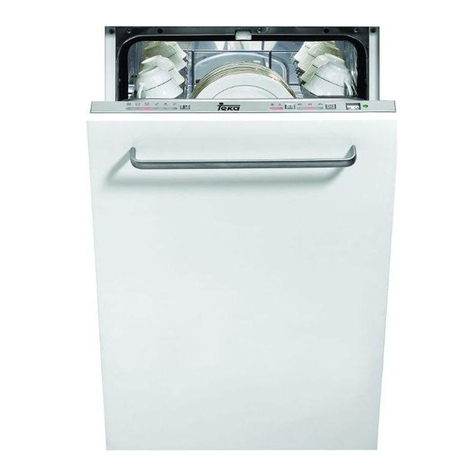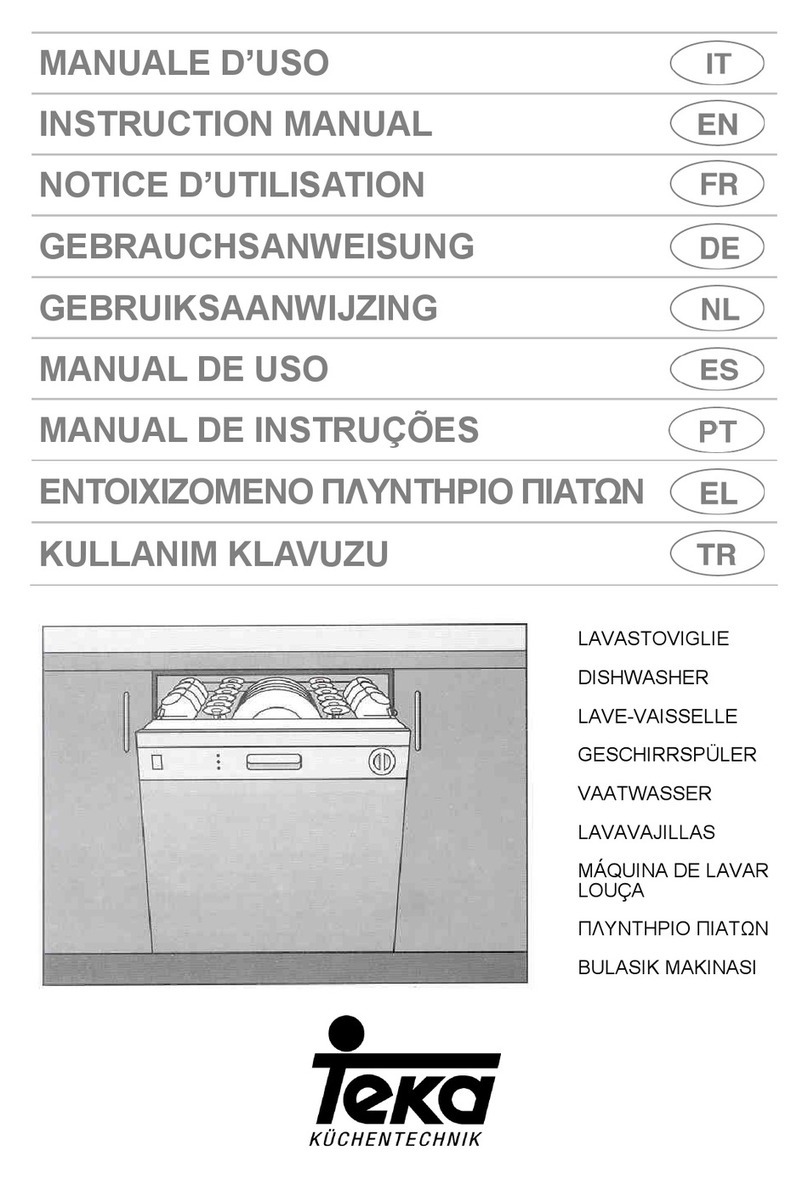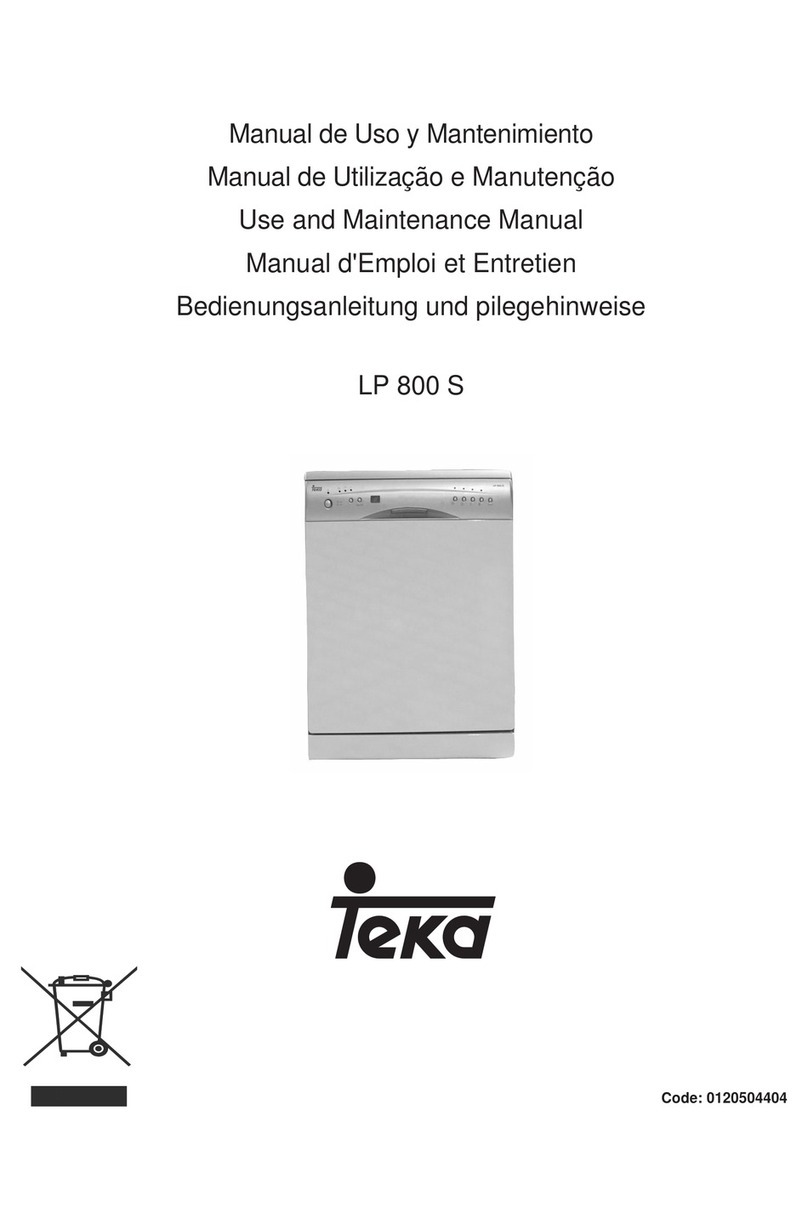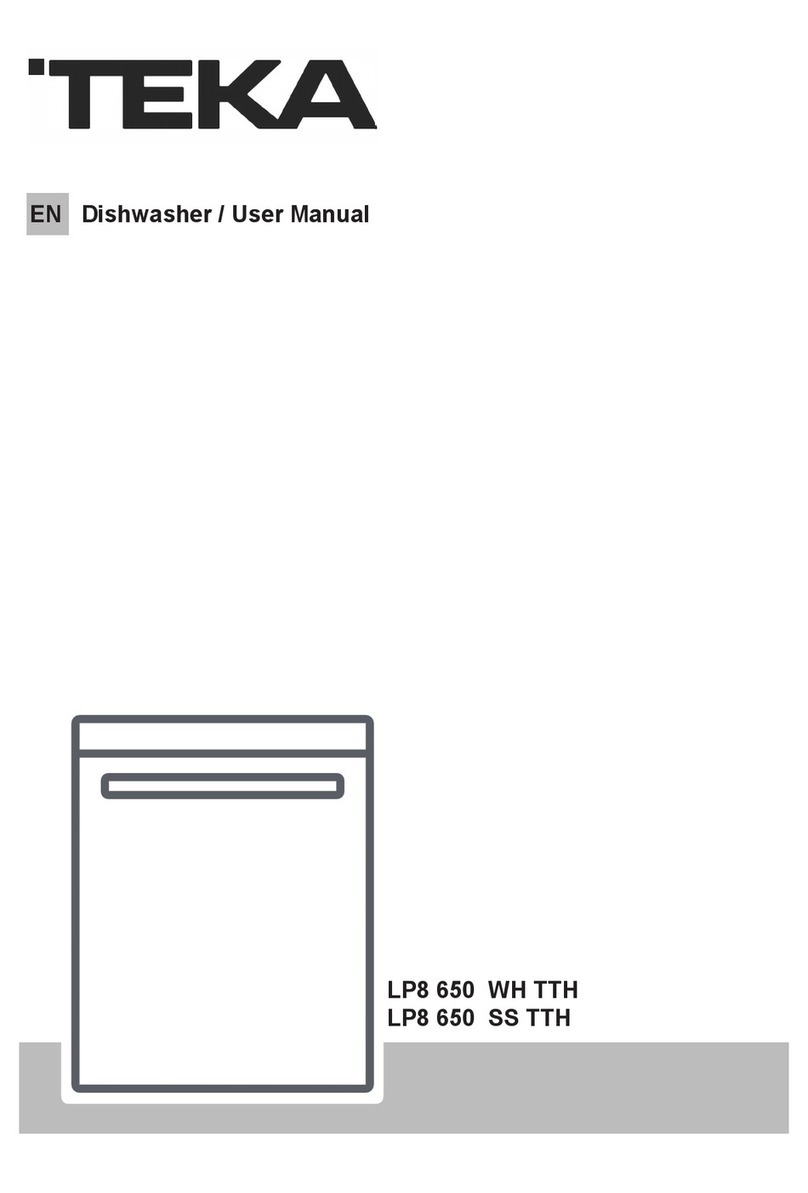
To review the section on troubleshooting Tips
willhelp youtosolve some common problems
by yourself .
Dear Customer,
Please carefully read this manual before using the
dishwasher, it will help you to use and maintain the
dishwasher properly.
Pass it on to any subsequent owner of the appliance.
This manual contains sections on safety Instructions,
OperatingInstructions,InstallationInstructionsand
Troubleshooting Tips, etc.
The manufacturer, following a policy of constant
developmentandupdatingof the product, may
make modifications without giving prior notice.
This usermanualshall alsobegot fromthe
manufactureror responsible vendor.
Keep it to refer to it ata laterdate.
If you can not solvethe problems by yourself ,
please ask for the help of professional technicians.
DishwasherFeatures.................................... ...3
A WaterSoftener...........................................4、
Attention before or after loading the Dishwasher
Baskets..........................................................9
FilteringSystem.............................................13
Caring for the Dishwasher..................... .........14.
B Loading theSalt into the Softener.................5、
C Fill the Rinse Aid Dispenser.........................5、
D Function of Detergent .................................6
、
Loadingthe upper ...............................10Basket
Loading the Lower ...............................10Basket
WashCycleTable...........................................11
Turning on theAppliance................................11
Change the Programme.............. ................12....
At the endof the Wash Cycle...........................12
Beforecallingfor service........................... .....23.
Errorcodes.................................... ..............24.
Technical information.............................. .....25..
ControlPanel...................................................3
.................................. 15Installationpreparation ...16Aesthetic panel's dimensions and installation
..............18Tension adjustment of the door spring
.............................. 18Connectionof drain hoses ......................... 19Dishwasher installation steps
About Electricity Connecting...........................20
ColdWaterConnection.................................. 21
Hot ............. 21WaterConnection.....................
